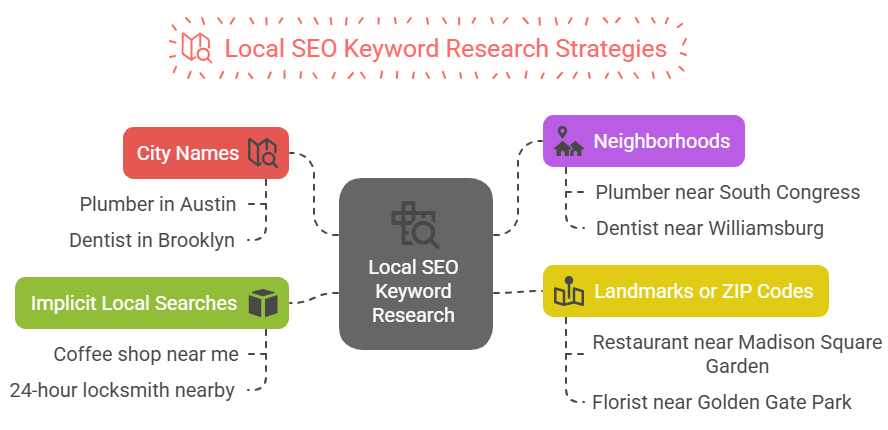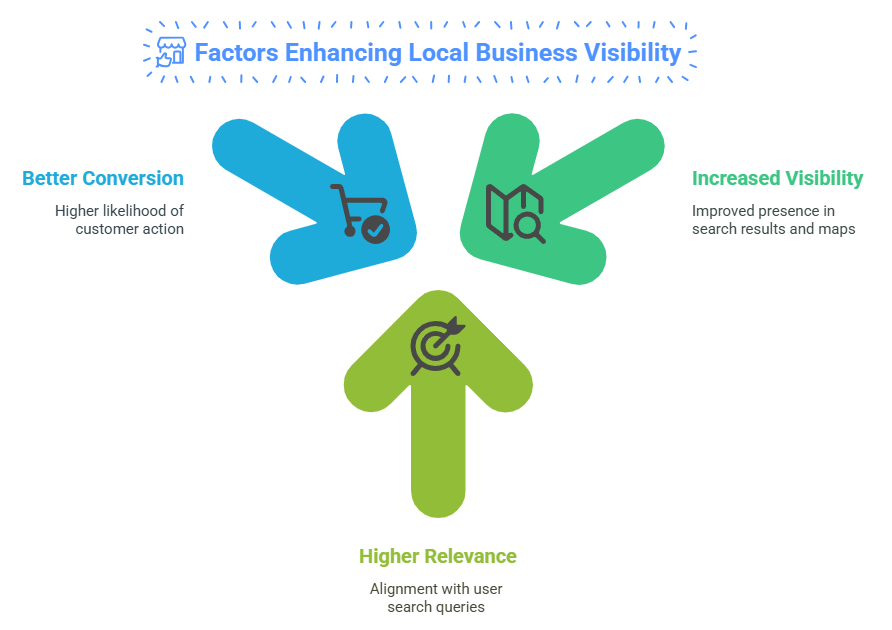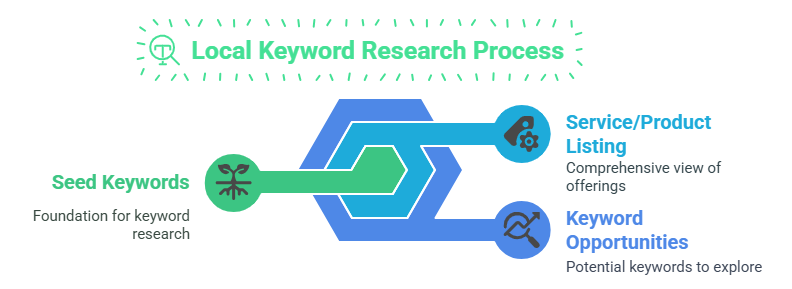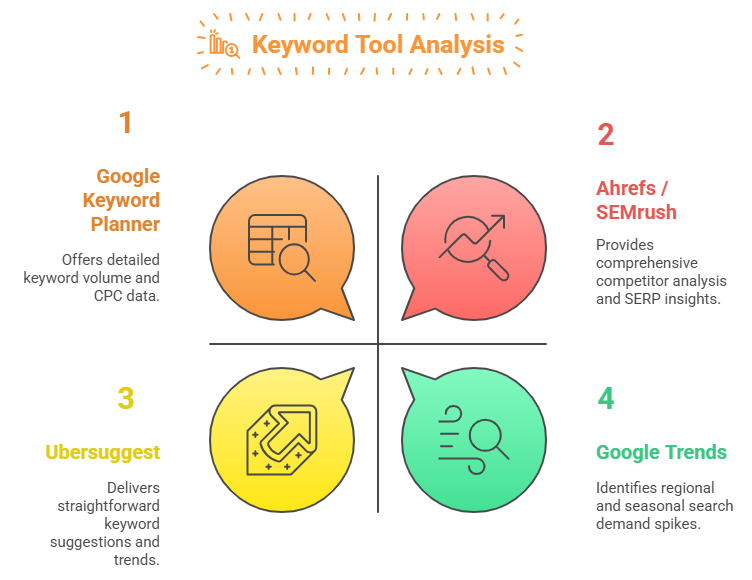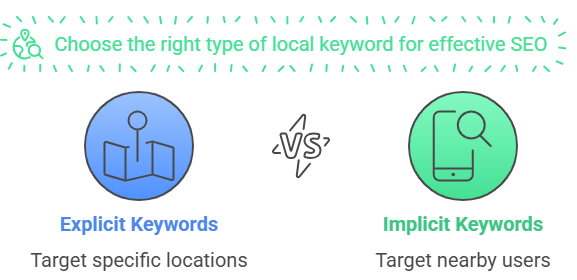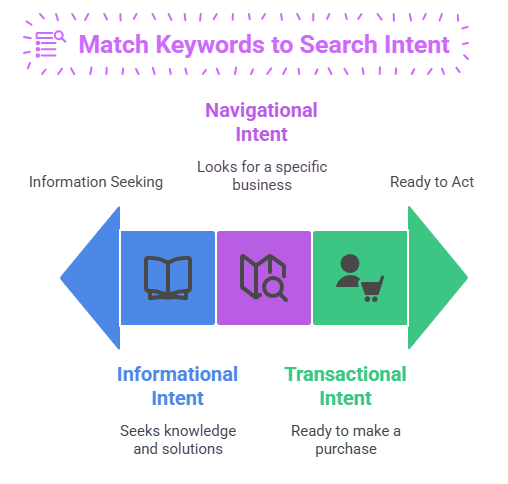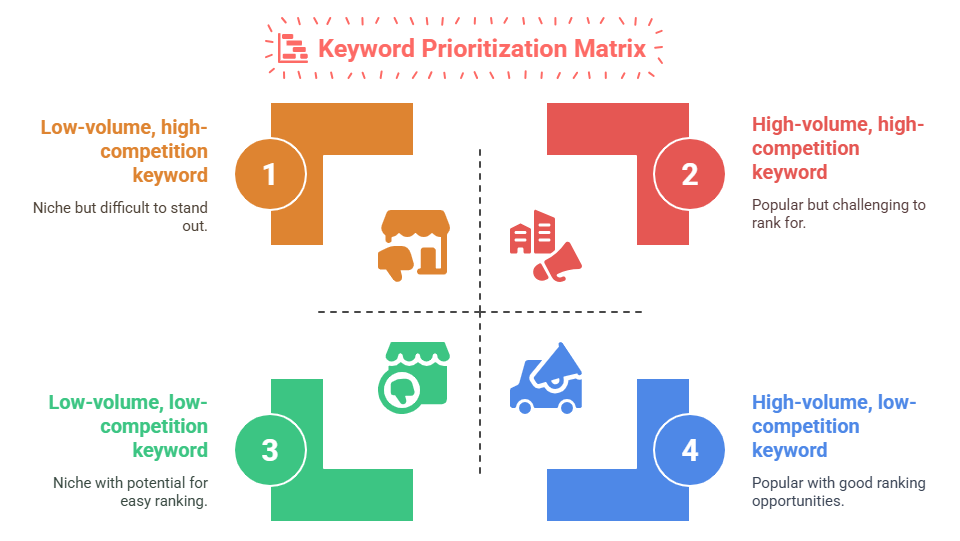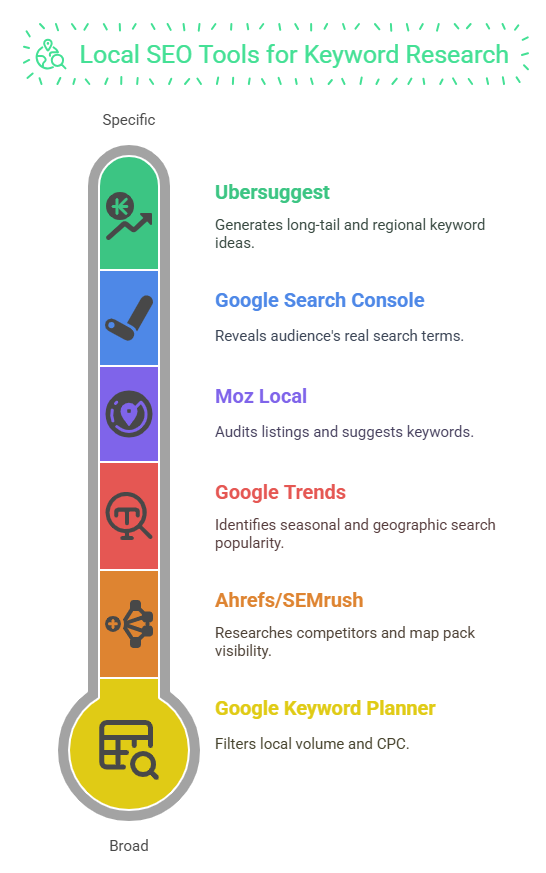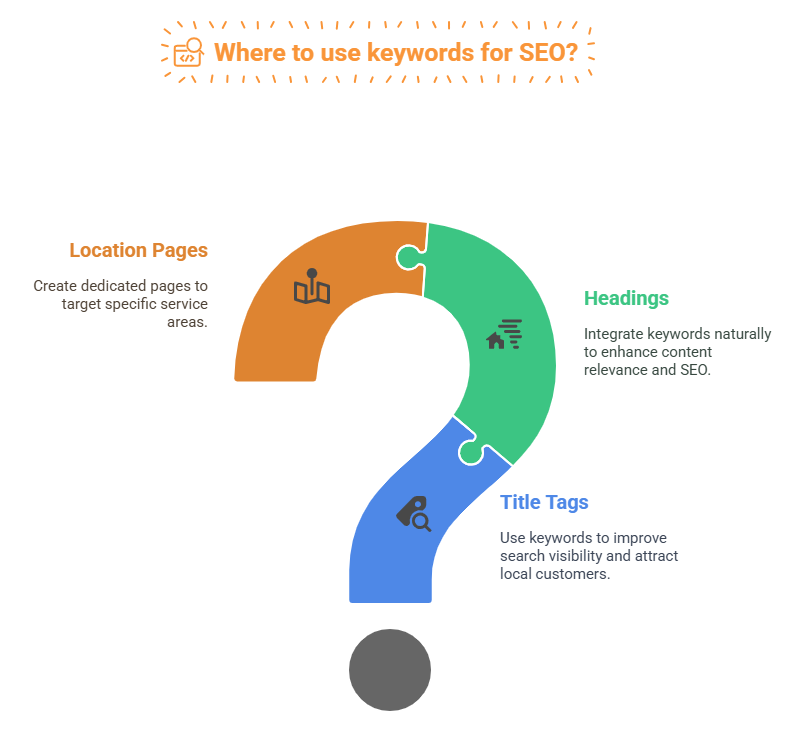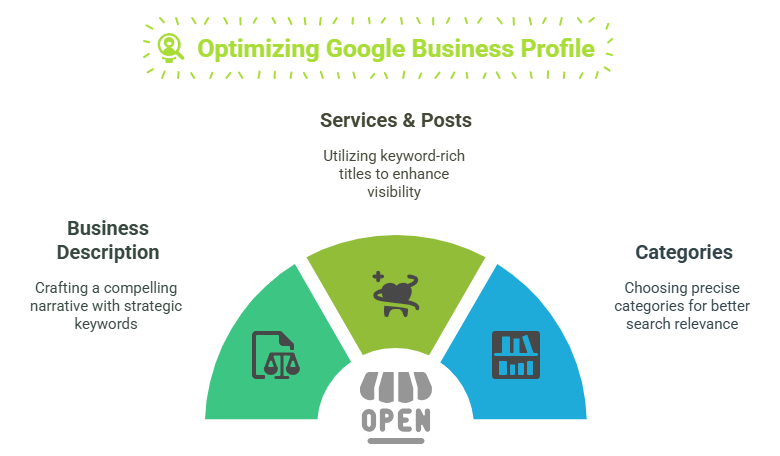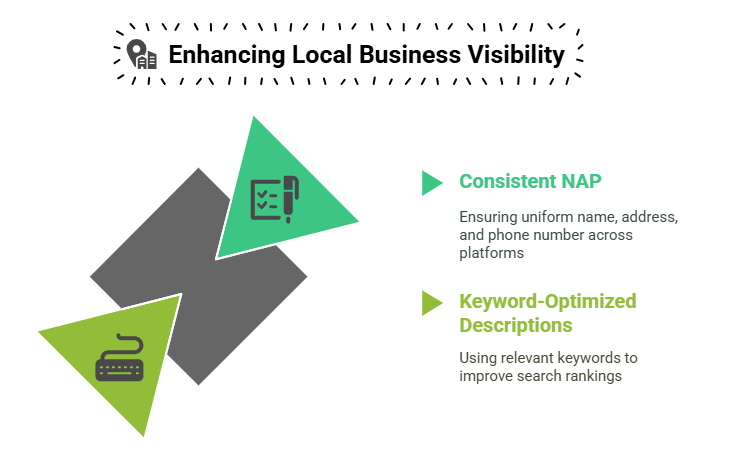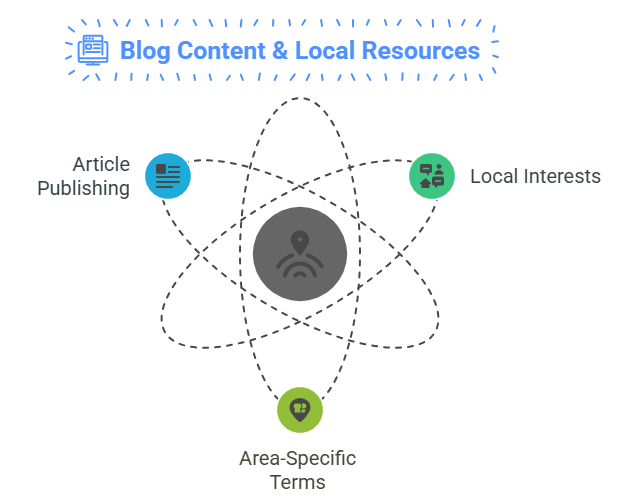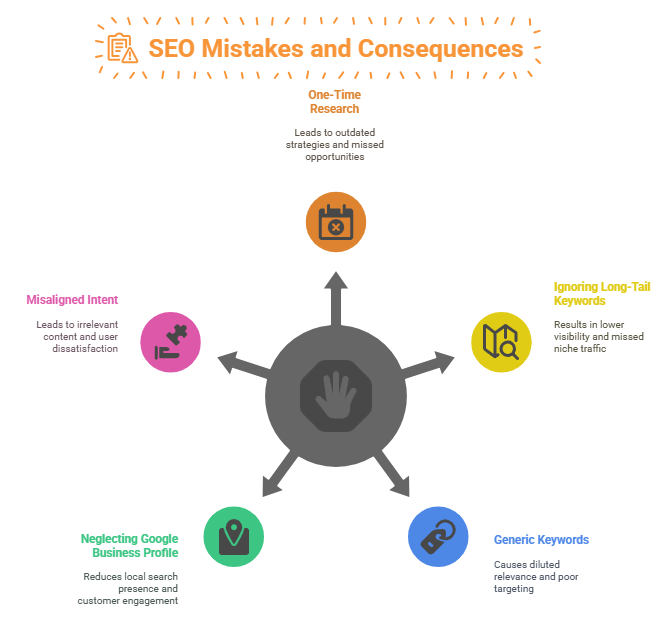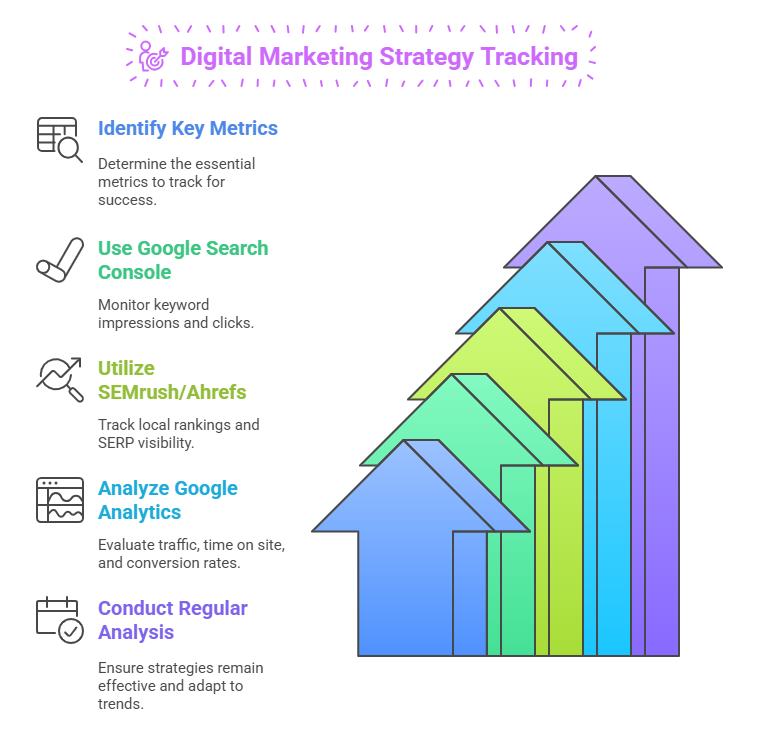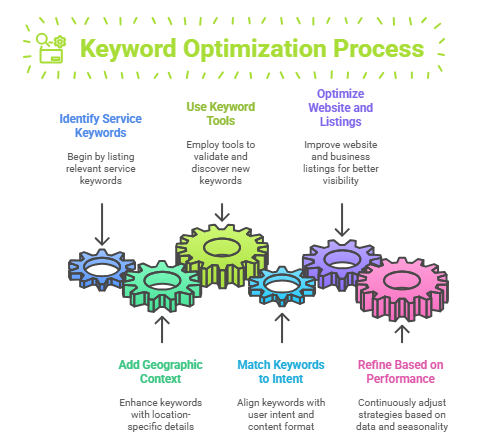
Many local businesses struggle to attract nearby customers because they’re targeting generic keywords that don’t reflect real-world search behavior. Without the right location-based phrases, even the best services remain invisible online.
This guide walks you through the essentials of Local SEO keyword research from identifying city- and ZIP-specific terms to using tools like Google Keyword Planner, Ahrefs, and Google Business Profile for targeted visibility.
With the right strategy, you can boost your presence in Google’s Local Pack, connect with high-intent customers in your area, and drive more foot traffic, calls, and conversions all through smarter local keyword targeting.
🌐 What Is Local SEO Keyword Research?
Local SEO keyword research focuses on finding terms that people in a specific geographic area use to search for local services. These queries often include:
- 📍 City Names: “Plumber in Austin”, “Dentist in Brooklyn”, “Coffee shop in Chicago”, “Lawyer in Miami”, “Digital marketing agency in Seattle
- 📍 Neighborhoods: “Plumber near South Congress”, “Dentist near Williamsburg”, “Coffee shop near Wicker Park”, “Lawyer near Brickell”, “Digital marketing agency near Capitol Hill”
- 📍 Landmarks or ZIP Codes: “Restaurant near Madison Square Garden”, “Florist near Golden Gate Park”, “Gym near Millennium Park”, “Pediatrician 33101”, “Auto repair 98101”
- 📍 Implicit Local Searches: “Coffee shop near me”, “24-hour locksmith nearby”, “Best Italian restaurant open now”, “Urgent care near me”, “Dog walker close by”
These keywords help Google match searchers with businesses that are nearby, making your business discoverable to people who are actually likely to convert.
🔍 Why It Matters?
- ✨ Increased Visibility: Shows up in Google’s Local Pack and Maps.
- ✅ Higher Relevance: Aligns with what people are actually typing into search.
- ⚡ Better Conversion: Local searches often mean high intent to buy or visit.
For example: Instead of targeting “best dentist,” a better phrase would be “best dentist in Chicago Loop.”
🔧 Step-by-Step Local Keyword Research Process
📓 List Your Services & Create Seed Keywords
Begin by listing out all the services or products your business provides. These are known as seed keywords—the foundation for your research.
Example: For a bakery: “birthday cakes,” “vegan muffins,” “custom cupcakes.”
You want a comprehensive view of what you offer so that no potential keyword opportunity is overlooked.
🌆 Add Local Modifiers
Once you have your seed keywords, you’ll localize them by adding specific geographic details. This includes:
- 🏙️ City names: “custom cupcakes in Brooklyn”
- 📍 Neighborhoods: “birthday cakes in SoHo”
- 🔢 ZIP codes: “birthday cakes 90210”
- 🗺️ Landmarks: “near Central Park”
This step ensures you’re targeting the exact locations your customers are searching in.
🤖 Use Tools to Expand Your List
Using keyword tools helps validate your ideas with real data and discover new opportunities:
- Google Keyword Planner: Offers keyword volume and CPC by region.
- Ubersuggest: Shows keyword suggestions with competition and trends.
- Ahrefs / SEMrush: Uncover competitors’ keywords, Local Pack triggers, and SERP positions.
- Google Trends: Spot regional or seasonal spikes in search demand.
Each tool gives you data-backed insights into what people near you are actually searching.
🤔 Understand Explicit vs. Implicit Local Keywords
Recognizing how users search is crucial for success:
- Explicit Local Keywords: Include a specific location. Example: “plumber in Queens.”
- Implicit Local Keywords: Implied location without naming it. Example: “plumber near me.”
📍 Tip: Use an incognito browser or tool like BrightLocal to simulate searches from a specific location and check if the keyword triggers map listings.
🧠 Match Keywords to Search Intent
Keywords represent different stages of a user’s journey. You need to align your content accordingly:
- 🛒 Transactional Intent: Keywords where users are ready to act. Example: “emergency plumber Boston.” Use for service pages.
- 📘 Informational Intent: Users looking for knowledge. Example: “how to unclog a drain.” Perfect for blog content.
- 🔍 Navigational Intent: Users looking for a specific business. Example: “Joe’s Plumbing Boston reviews.” Optimize your About or Contact pages.
This mapping ensures higher engagement and conversion rates.
🔢 Evaluate & Prioritize
Prioritize keywords based on:
- 📈 Search Volume: Are people actively searching for this?
- 💪 Keyword Difficulty: Can you realistically compete?
- 💰 Cost Per Click (CPC): High CPCs often signal high buyer intent.
- 📊 Trends & Seasonality: Are searches consistent or seasonal?
🎯 Pro Tip: Long-tail keywords like “24-hour vet Denver CO” tend to have lower competition but higher conversion potential.
📊 Top Tools for Local SEO Keywords
| Tool | Use Case |
|---|---|
| Google Keyword Planner | Local volume + CPC filtering |
| Ahrefs / SEMrush | Competitor research + map pack visibility |
| Google Trends | Seasonal or geographic search popularity |
| Google Search Console | Real search terms from your audience |
| Moz Local | Listing audits + keyword suggestions |
| Ubersuggest | Long-tail and regional keyword ideas |
🔎 Where to Use These Keywords
📄 On Your Website
- 🏷️ Title Tags: “Emergency Roofer in San Jose | Free Estimates”
- 🧩 Headings: Include service and location keywords naturally in H1-H3 tags
- 🌍 Location Pages: Create dedicated pages for each target service area
📅 Google Business Profile (GBP)
- 📝 Business Description: Incorporate key phrases like “family lawyer in Chicago”
- 🧾 Services & Posts: Use keyword-focused names (e.g., “Teeth Whitening in Lincoln Park”)
- 🗂️ Categories: Select the most accurate and search-friendly business category
🧻 Citations & Directories
- 🧭 Maintain consistent NAP across all directories
- 📝 Use keyword-optimized descriptions in local business listings
📈 Blog Content & Local Resources
- 📰 Publish articles targeting local interests and questions
- 📍 Include area-specific terms: “Best gluten-free bakery in Brooklyn”
❌ Common Mistakes to Avoid
- ❌ Treating keyword research as a one-time task
- ❌ Ignoring long-tail or low-volume local keywords
- ❌ Using only generic keywords without location tags
- ❌ Forgetting to optimize your Google Business Profile
- ❌ Misaligning keyword intent and content type
📊 How to Track Success?
Monitor and adjust your strategy by tracking:
- 📈 Google Search Console: Keyword impressions and clicks
- 🧭 SEMrush / Ahrefs: Local rankings and SERP visibility
- 📊 Google Analytics: Traffic, time on site, and conversion rate by location
Regular analysis ensures you stay ahead of local competition and adapt to new trends.
🔑 Key Takeaways
- ✅ Start with clear service keywords and add geographic context
- ✅ Use keyword tools to validate and uncover new opportunities
- ✅ Match each keyword to its proper intent and content format
- ✅ Optimize both your website and business listings
- ✅ Continue refining based on performance data and seasonality

